The Victorian Era, stretching from 1837 to 1901, was an epochal period that ushered in unparalleled transformations across Britain. London, as the crown jewel of this era, bore witness to sweeping changes in technology, society, and art. It’s no wonder then that filmmakers are continually drawn to this period, captivated by the dichotomies it presents: opulence alongside poverty, technological progress juxtaposed with traditional values, and so much more.
Victorian London was not merely a backdrop; it was a vibrant, teeming entity. Its cobbled streets echoed with the footsteps of the rich as they made their way to grand soirees, but equally resonant were the hushed murmurs of secret deals in dimly lit alleys. At the heart of this bustling city was the River Thames, a silent observer to the tales of ambition, love, despair, and intrigue that unfolded on its banks.
As readers and movie-goers, our fascination with Victorian London is twofold. For one, it promises a glimpse into an era that shaped modern Britain. Equally compelling are the myriad stories waiting to be told against this historic canvas. So, as we prepare to explore the Victorian London movies that have best encapsulated this era’s essence, let’s first understand the era itself and its undeniable allure. Let’s embark on a journey through ’10 Iconic Films Celebrating the Tales and Tunes of Victorian London’.
1 – Hysteria (2011): An Electric Tale of Victorian Innovation and Intimacy
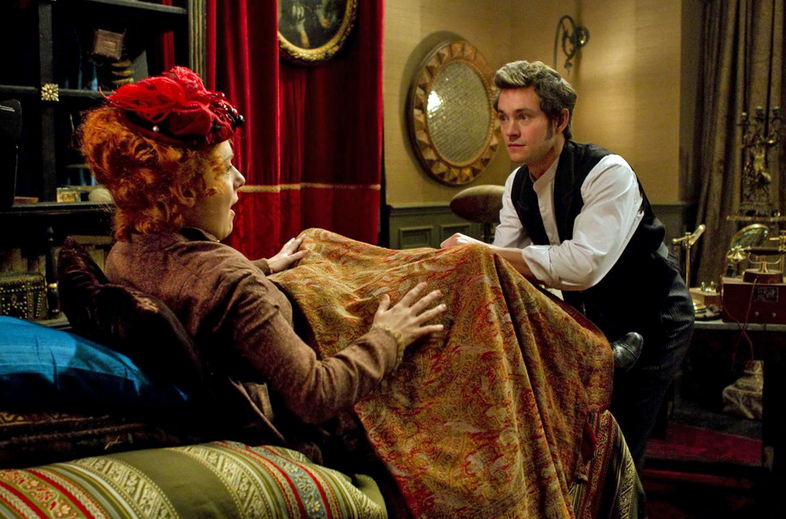
When we think of the Victorian Era, rigid social norms and prim manners often come to mind. But Hysteria, directed by Tanya Wexler, brings to the silver screen a tale that playfully upends these stereotypes. It captures London during a period of rapid technological advancement, highlighting one invention in particular – the electromechanical vibrator.
Set against the backdrop of Victorian London, the film unravels the story of Dr. Mortimer Granville (played by Hugh Dancy), a young doctor seeking to establish himself. Frustrated by the medical fraternity’s resistance to modern techniques, he stumbles upon an employment opportunity with Dr. Robert Dalrymple. Their primary treatment? Addressing women’s ‘hysteria’ – a catch-all diagnosis for a plethora of emotional and physical ailments women were believed to suffer from.
While the movie offers ample laughs, especially with the invention of the vibrator as a medical device, it also subtly tackles the stifling gender norms of the time. It showcases the dichotomy of a society witnessing great leaps in technology while still being entrenched in archaic beliefs about women’s health.
Maggie Gyllenhaal’s character, Charlotte, introduces another facet of Victorian London. As a strong female character, she represents the burgeoning feminist movements of the time. Her fiery spirit contrasts with the demure demeanor expected of women, providing a lens into the era’s early feminist stirrings.
In essence, Hysteria isn’t merely a comedic jaunt into a curious historical footnote; it’s a testament to the era’s complexities, blending modernity with tradition.
2 – Great Expectations (1946): A Timeless Adaptation of Dickensian London

Few authors capture the spirit of Victorian London as Charles Dickens did, and Great Expectations, directed by David Lean, stands as a testament to the enduring power of Dickens’s storytelling. This British movie adaptation is more than a faithful rendition of the novel; it’s a cinematic marvel that brilliantly evokes the atmosphere of the Victorian age.
The story traces the life of young Pip, an orphan who rises from destitution to wealth, thanks to a mysterious benefactor. Along the way, he grapples with themes of class, ambition, and love. The fog-laden marshes, the gloomy streets of London, and the decaying grandeur of Miss Havisham’s home – all are depicted with a vividness that transports viewers straight into the heart of the 19th century.
While Pip’s personal journey forms the narrative’s crux, the backdrop of Victorian London plays an equally pivotal role. The city’s labyrinthine streets, teeming with a motley crowd of characters, reflect the stark class disparities and the relentless quest for social mobility.
Great Expectations isn’t just a coming-of-age tale; it’s a snapshot of a society undergoing seismic shifts, captured through the lens of one man’s journey.
3 – The Picture of Dorian Gray (1945): A Gothic Tale of Vanity and Decay
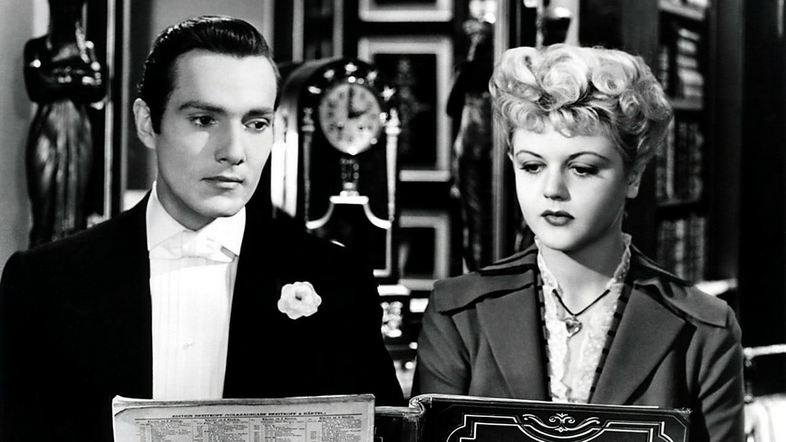
Oscar Wilde’s literary masterpiece found its way to the big screen in 1945, bringing with it the haunting tale of Dorian Gray, a man who sells his soul for eternal youth. Directed by Albert Lewin, this adaptation stands out not just for its faithfulness to Wilde’s vision but also for its evocative portrayal of Victorian London.
At its core, the film is a cautionary tale about the dangers of unchecked vanity and hedonism. The enigmatic portrait, which ages and decays while Dorian remains untouched by time, is a metaphor for the era’s societal obsessions with beauty, youth, and status.
The opulent drawing rooms, lavish parties, and dark, shadowy alleys of Victorian London become more than mere settings. They serve as a canvas, reflecting the dualities of the age – morality versus indulgence, the public façade versus private desires.
Moreover, the movie delves deep into the art and aesthetic movement of the late 19th century, where art for art’s sake became a rallying cry. Through its rich visuals and compelling storytelling, The Picture of Dorian Gray is not just a Victorian London film but a deep dive into the era’s philosophical and artistic undercurrents.
4 – Oliver! (1968): A Melodious Odyssey through Dickens’ London

If ever there were a musical that encapsulated the heartbeat of Victorian London, it’s undoubtedly Oliver! Directed by Carol Reed and based on Charles Dickens’ classic, “Oliver Twist,” this British movie pulls at the heartstrings while dazzling with its vibrant song and dance numbers.
The film tells the story of young Oliver, an orphan who navigates through the underbelly of Victorian society. From the bleak confines of a workhouse to the bustling streets of London, his journey provides a window into urban life of the 19th century. Songs like “Consider Yourself” and “Who Will Buy?” are more than catchy tunes; they narrate the dreams and struggles of a populace seeking belonging amidst rapid urbanization.
Beyond the music, the portrayal of the Fagin’s den and its motley crew of child pickpockets showcases the stark contrasts of the age. Wealth and poverty, innocence and corruption, coexisted side-by-side in the sprawling metropolis.
Oliver! is more than a delightful musical; it’s a kaleidoscope, reflecting both the joys and the undercurrents of a bygone era.
5 – The Elephant Man (1980): An Unmasking of Humanity in the Gaslit Alleys

David Lynch’s haunting cinematic experience, The Elephant Man, pulls back the curtain on one of the lesser-seen facets of Victorian London. The film, based on the life of Joseph Merrick (often mistakenly referred to as John Merrick), confronts viewers with the question: What truly defines humanity?
The stark black-and-white visuals are more than an aesthetic choice; they mirror the clear dichotomies of the age. As Merrick, played by John Hurt, is exhibited as a “freak” due to his severe physical deformities, the film dives deep into societal obsessions with normalcy and otherness. Victorian London’s medical establishments and high society, often characterized by their rigidity, are juxtaposed against the raw, unfiltered emotions that Merrick brings to the fore.
While the gaslit streets and grand theatres form the backdrop, it’s the human interactions, marked by both cruelty and kindness, that stand out. Through Merrick’s journey, The Elephant Man spotlights the human spirit’s resilience in the face of adversity.
6 – Alice in Wonderland (2010): A Whimsical Dive into Victorian Dreams and Nightmares

Tim Burton’s fantastical adaptation of Lewis Carroll’s magnum opus, Alice in Wonderland, is a psychedelic journey that fuses elements of the Victorian ethos with dreamlike wonder. While the story unfolds in the surreal landscapes of Wonderland, its roots are firmly planted in Victorian sensibilities.
Alice, portrayed by Mia Wasikowska, is no longer the child of Carroll’s narrative but a young woman on the cusp of adulthood. Her resistance to the stifling societal norms, particularly the expectations heaped upon women, speaks volumes about the era’s changing dynamics. Her descent into Wonderland is more than a mere adventure; it symbolizes the clash between Victorian rigidity and imaginative freedom.
The Mad Hatter, the Red Queen, and the myriad characters Alice encounters bring to life the era’s fascination with the fantastical. Amidst the steampunk aesthetics and dreamlike scenarios, Burton’s Alice in Wonderland challenges and celebrates the spirit of an age teetering between tradition and progress.
7 – Dr. Jekyll and Mr. Hyde (1931): A Dual Exploration of the Victorian Psyche
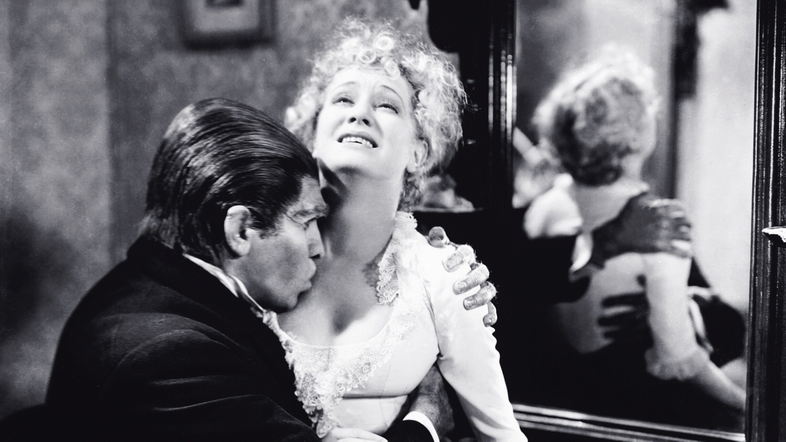
Rouben Mamoulian’s Dr. Jekyll and Mr. Hyde isn’t just a film; it’s an unsettling exploration of the duality of human nature set against the atmospheric backdrop of Victorian London. This classic horror tale brings Robert Louis Stevenson’s novel to life, delving deep into the battle between morality and dark desire that defines the human experience.
The narrative follows Dr. Henry Jekyll, a respected scientist whose experiments on separating the good from evil in human nature go horrifyingly awry, birthing the monstrous Mr. Hyde. Fredric March’s portrayal of both characters earned him an Oscar, and for good reason. The transformation scenes, even by today’s standards, remain chillingly effective, a testament to the film’s craft.
Beyond the horror, the film is a poignant commentary on the Victorian societal norms that often suppressed natural human desires, forcing them into the shadows. The bustling streets of London serve as a constant reminder of a world that, on the surface, champions decorum but underneath grapples with its intrinsic contradictions.
8 – Sweeney Todd: The Demon Barber of Fleet Street (2007): A Macabre Melody in Victorian Alleys
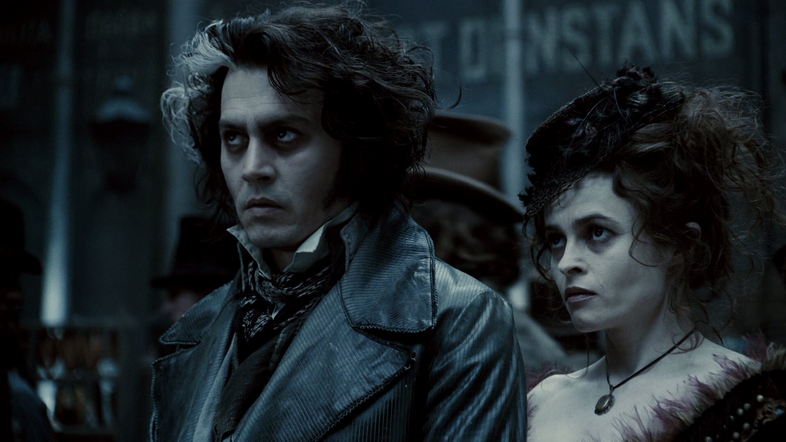
Tim Burton and Johnny Depp reunite in this darkly comedic musical that draws its inspiration from the penny dreadful tales that were rife during the Victorian Era. Sweeney Todd: The Demon Barber of Fleet Street is a tale of revenge, love, and meat pies, presenting a grimy underbelly of London rarely shown in cinema.
Depp’s Sweeney Todd, formerly Benjamin Barker, returns to London after wrongful incarceration, his heart set on avenging the injustices meted out to him and his family. The city’s fog-laden streets and the grotesque humor hiding in Helena Bonham Carter’s pie shop capture the darker tones of an era often romanticized. The musical numbers, ranging from mournful ballads to frenetic tunes, further amplify the story’s emotional heft.
As razor blades flash and pies are baked, the film speaks of the lengths to which despair can drive a person. It’s a testament to the grittier side of Victorian life, where justice and vengeance danced a perilous waltz.
9 – Bram Stoker’s Dracula (1992): A Gothic Love Letter to Victorian Shadows
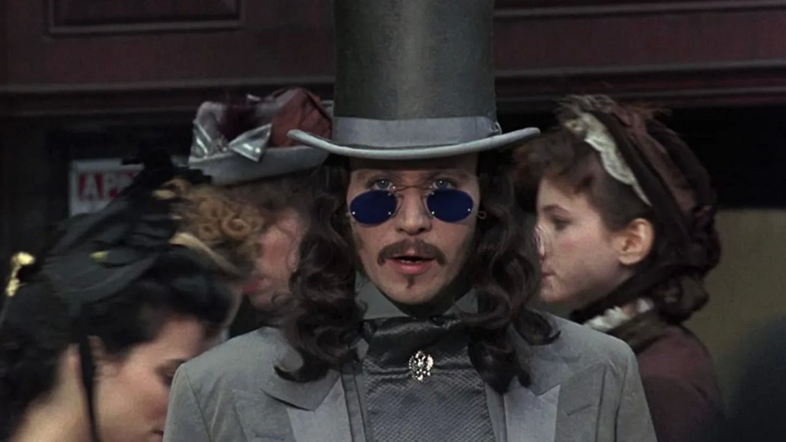
Francis Ford Coppola’s rendition of Bram Stoker’s Dracula is more than just a vampire film. It’s a gothic romance that intertwines the age-old legend of Dracula with the rich tapestry of Victorian London. The aesthetics, from the elaborate costumes to the grand sets, scream opulence and decay in equal measure.
This tale, rooted in Eastern European folklore, finds its drama amplified in the cobblestone streets of Victorian-era London. Count Dracula, played with an otherworldly charm by Gary Oldman, embarks on a journey westward, driven by a love that defies death and time. The movie beautifully juxtaposes the mythical realm of Transylvania with the more structured, yet equally enigmatic, world of Victorian England.
Themes of forbidden love, the fear of the unknown, and the ever-present specter of death pervade the narrative. It’s not just a story of a monster but a reflection of an age’s anxieties. In every shadowy corner, from the grand ballrooms to the dim-lit alleys, Bram Stoker’s Dracula captures the essence of a bygone era’s fascination with the supernatural.
10 – The Private Life of Sherlock Holmes (1970): Unveiling Mysteries Beyond Crime
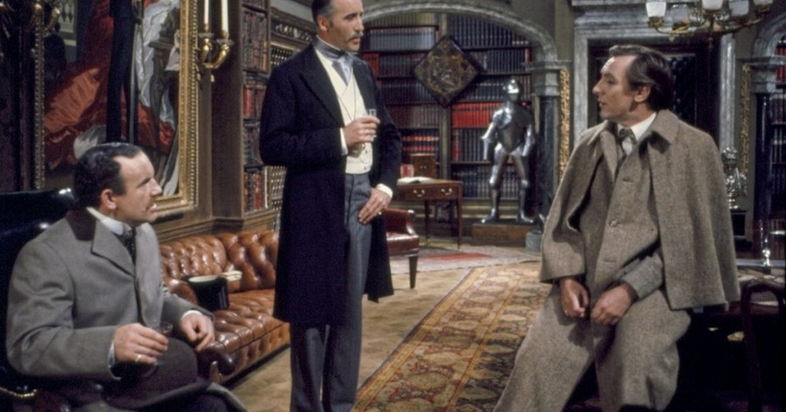
Billy Wilder’s The Private Life of Sherlock Holmes steps away from the traditional tales of the world’s most renowned detective to offer a more intimate gaze into his life and persona. Set against the backdrop of Victorian London, this film is a blend of intriguing mysteries and human moments that define Sir Arthur Conan Doyle’s iconic character.
Rather than focusing solely on Holmes’s genius-level deduction skills, the narrative touches upon his vulnerabilities, relationships, and his often-overlooked sense of humor. Robert Stephens offers a nuanced performance as Sherlock, portraying him with both wit and depth, while Colin Blakely’s Dr. John Watson provides warmth and camaraderie.
The cobblestone streets, misty Thames riverbanks, and the gas-lit ambiance of London serve not just as a setting but as characters themselves, evoking the era’s charm. Beyond the criminal intrigues, this film shines a light on the more personal dilemmas Holmes faced, making it a refreshing and human take on the legendary detective’s adventures in the heart of Victorian England.
Unraveling the Darkness of Victorian London
Venturing into the shadowy realms of Victorian London, one cannot help but be struck by the palpable sense of darkness. While Victorian London films often paint a picture of fog-enshrouded streets and gas-lit evenings, this atmospheric gloom was very much a lived reality. The unchecked strides of the Industrial Revolution blanketed the city in coal smoke, leading to the infamous “pea-soupers” or dense smogs.
However, beyond the literal fog and grime lay deeper, more insidious shadows. The stark contrasts between the opulent lives of the elite and the desperate struggles of the impoverished were painfully evident. The city’s underbelly, teeming with crime and squalor, was a far cry from the glittering ballrooms and theaters frequented by high society.
This era, though marked by significant advancements and discoveries, was also a time of societal unrest. The haunting tales of Jack the Ripper, child laborers toiling in hazardous conditions, and the growing chasm between classes added layers of complexity to the narrative of Victorian London.
But why this persistent dark imagery? Partly, it’s because of the romanticized notion of a mysterious, bygone era. The play of shadows, both literal and metaphorical, offers an intriguing canvas for storytelling. From chilling Gothic tales to heart-wrenching dramas, the darkness of Victorian London provides a rich backdrop that continues to captivate audiences, making it a recurrent theme in British movie culture.
In weaving together the tales of ambition, passion, deceit, and hope, these films offer more than mere entertainment. They serve as a mirror, reflecting the dichotomies of a society on the cusp of modernity. As we reminisce about the tales and tunes of Victorian London, let’s also remember the lessons they offer, reminding us of the timeless nature of human emotions and endeavors.
Distinctive Charm: What Makes Victorian Literature Stand Apart?
Victorian literature is known for its distinctive character, reflecting the rapid changes society underwent during the 19th century. But what elements make it unique? Firstly, the Victorian Era was marked by an explosive growth in print culture. Thanks to advancements in printing technology and increased literacy rates, books became more accessible to the masses. This democratization led to diverse genres, from Gothic horror tales to realist novels.
Strong female characters began emerging, challenging traditional gender roles. Writers like George Eliot and Elizabeth Barrett Browning presented women in new lights, portraying them as individuals with their own desires and ambitions.
Another pivotal theme was social criticism. Dickens, with his masterful tales, highlighted the grim realities of urban life, the plight of the poor, and the stark class divides. The era also birthed the detective novel. With characters like Sherlock Holmes, readers were introduced to the analytical art of crime-solving.
Moral dilemmas were another cornerstone. As science, particularly Darwin’s theory of evolution, began challenging long-held religious beliefs, literature grappled with these conflicts. Novels explored the complexities of human nature, ethics, and spirituality.
Lastly, the supernatural and the uncanny held a special place. Gothic novels, laden with eerie mansions, specters, and ominous atmospheres, tapped into the era’s fascinations and fears.
In conclusion, Victorian literature, with its rich tapestry of themes and characters, offers a vivid window into the hopes, anxieties, and innovations of a society in flux. It’s no wonder that so many filmmakers choose this era as a backdrop, translating the page’s evocative words into powerful British movie visuals.

